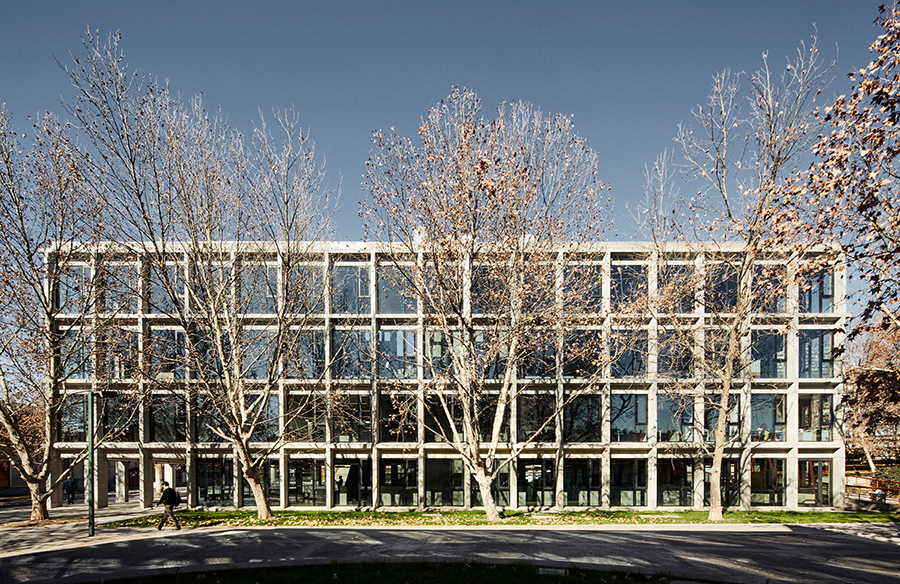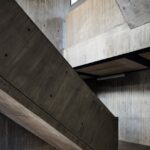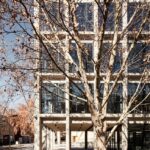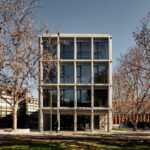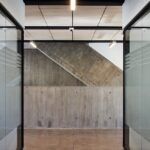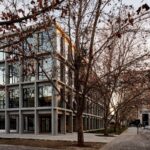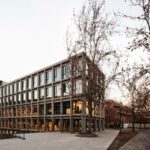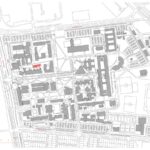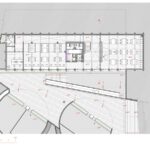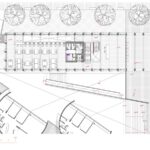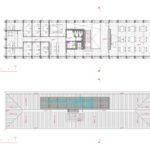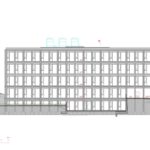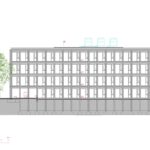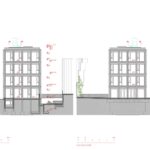The Pedagogy in Secondary Education School at the Pontifical Catholic University of Chile finds its place within the San Joaquin Campus. Situated alongside the Faculty of Education Building, this new addition expands the educational precinct within the sprawling 45-hectare campus while maintaining harmony with the existing structures.
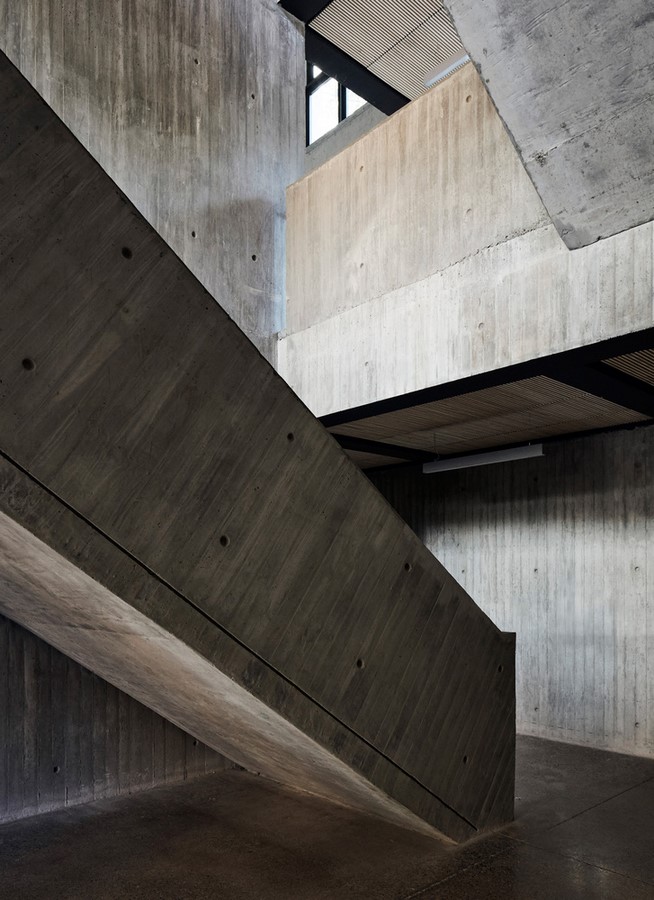
Design Concept: Integration and Neutrality
The project’s design concept is rooted in seamlessly integrating the new building with its surroundings. Amidst the diverse architectural languages of the campus, the aim is for the structure to blend in neutrally, offering a harmonious backdrop for campus life. This approach informs the choice of materials and construction techniques to ensure a cohesive visual identity.
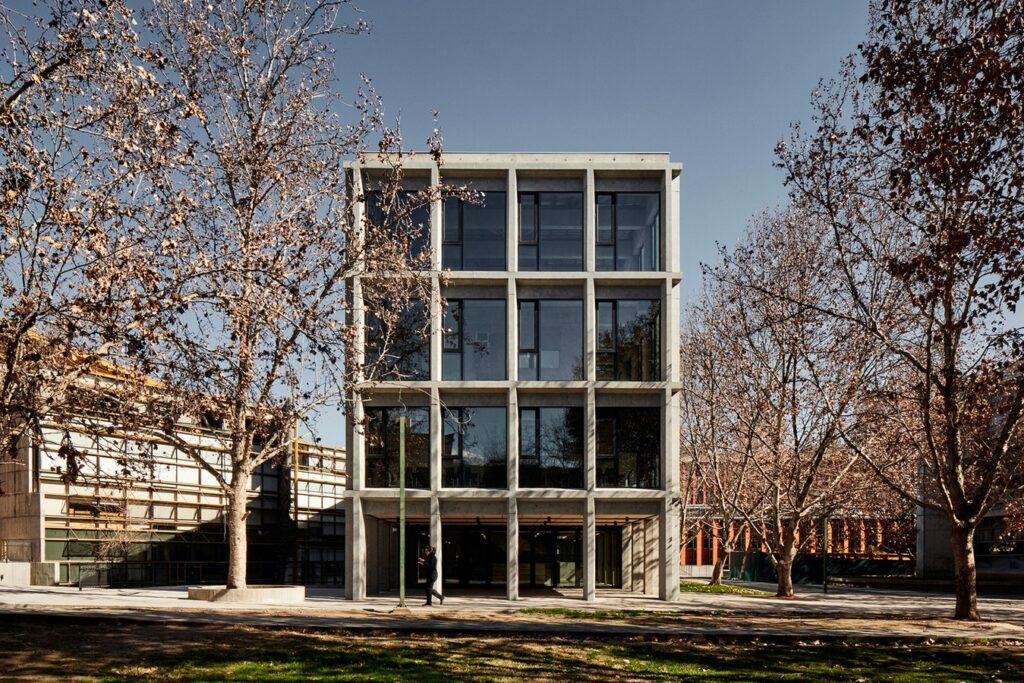
Structural Innovation: Reinforced Concrete Framework
A key feature of the building is its reinforced in situ concrete structure, strategically designed to offer both structural integrity and aesthetic coherence. With a standardized distance of 2.45 meters between elements, the construction process is streamlined, minimizing on-site decision-making and enhancing efficiency. This geometric precision extends to the perimeter structure, ensuring a consistent exterior appearance.
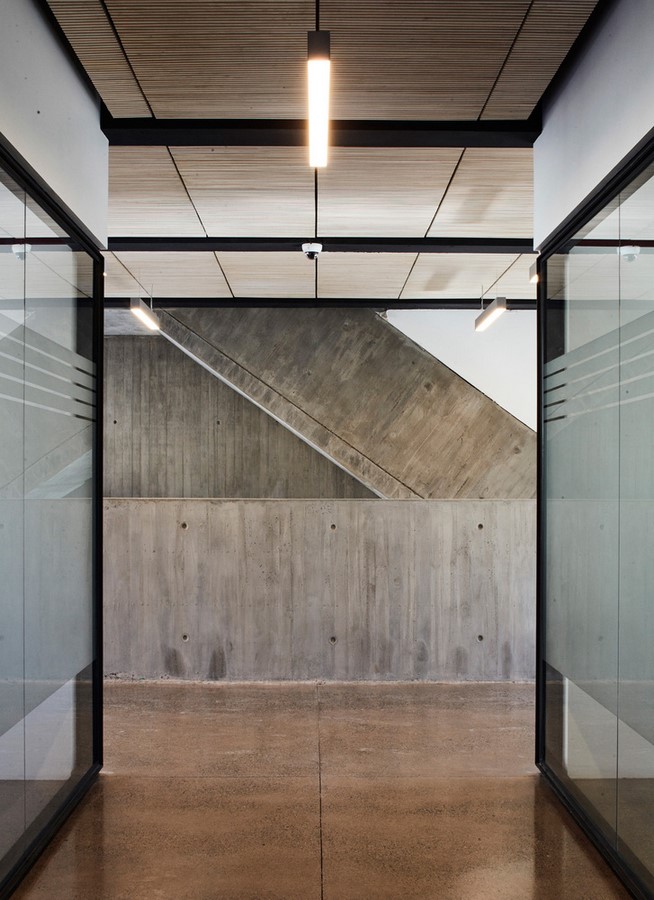
Spatial Organization: Connectivity and Fluidity
The layout emphasizes connectivity and fluid circulation, enhancing user experience and spatial coherence. The building features a central core around which various functions revolve, including office spaces, seminar rooms, and student study areas. This discontinuous circulation system offers visual and spatial connectivity, enabling users to navigate the space with ease while fostering interaction and collaboration.
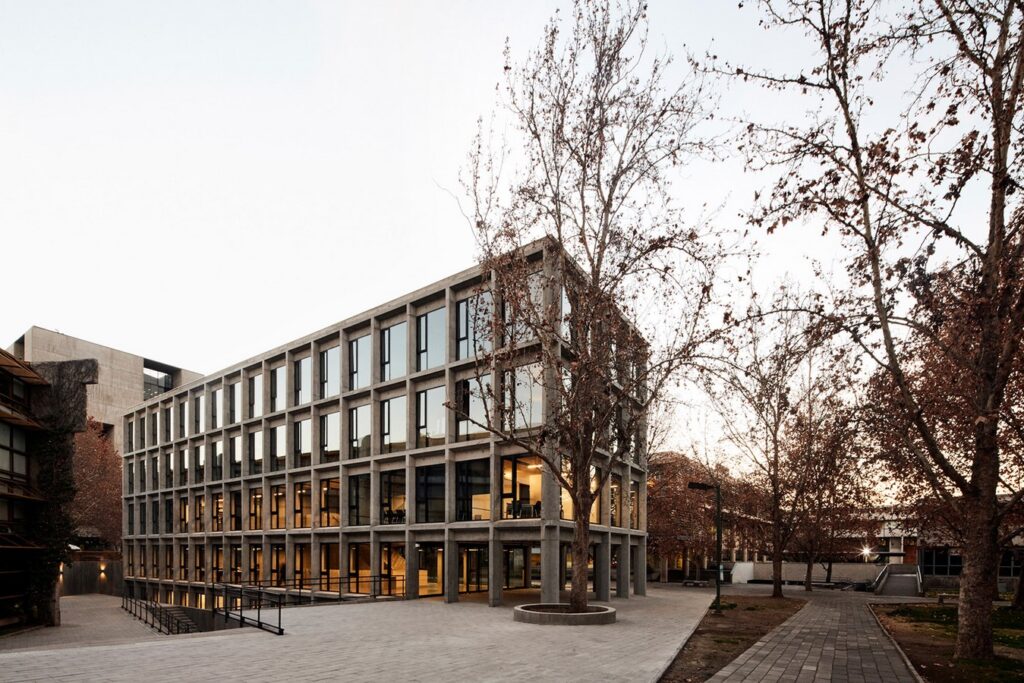
Access and Integration: Embracing the Campus Fabric
Strategically positioned access points facilitate seamless integration with the campus environment. A void within the volume serves as the main entrance, marking the convergence of campus circulation axes. Additionally, a sunken courtyard towards the Faculty of Education fosters outdoor connectivity, encouraging interaction between the new and existing educational facilities.
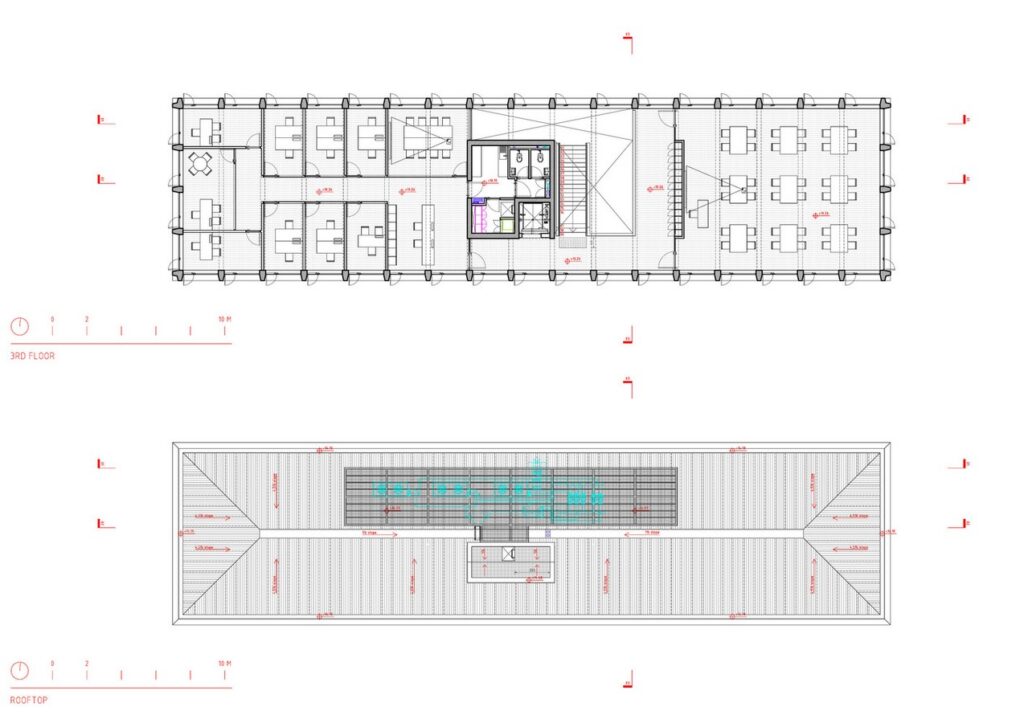
Conclusion: Harmonizing Form and Function
The Pedagogy in Secondary Education School Universidad Católica exemplifies a harmonious blend of architectural innovation and functional pragmatism. By prioritizing integration, spatial coherence, and structural efficiency, the project not only expands educational infrastructure but also enriches the campus experience for students and faculty alike.


